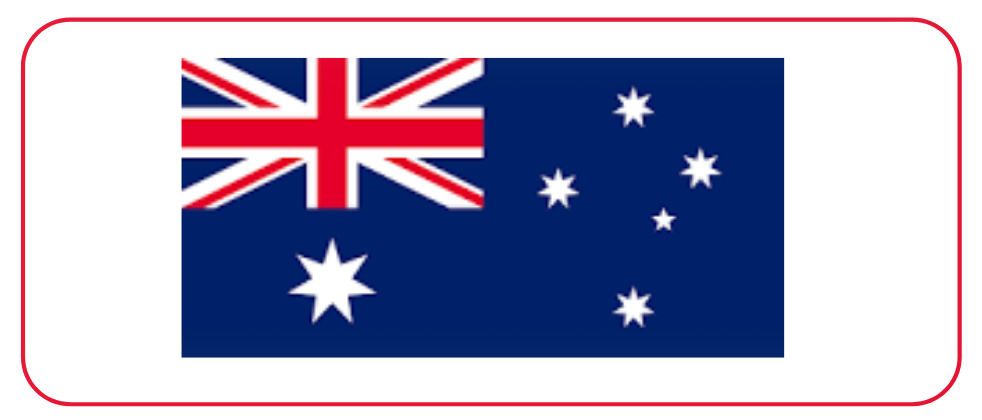NEW PROSPECTS OF URGINEA MARITIMA (L. BACKER): EFFICIENT PROLIFERATION INHIBITION AND INDUCED INTRINSIC APOPTOSIS PATHWAY AGAINST HUMAN LEUKAEMIA HL-60 CELL LINE
DOI:
https://doi.org/10.53555/eijas.v3i1.132Keywords:
Promyelocytic leukaemia HL-60 cell line, Urginea maritima (L. Backer, Proliferation inhibition, Intrinsic apoptosis pathwayAbstract
Natural products with their great structural diversity have offered major opportunities for identifying of new drugs against numerous of diseases, including malignant diseases. Leukaemia is a malignant disease that originates from a multistage process of accrual genetic alterations. These alterations destroy the slight sense of balance between cell proliferation, differentiation, and apoptosis. Conventionally, the chemotherapy, radiotherapy, and transplantation techniques are the major treatments for leukaemia diseases. However, these traditional approaches have drawbacks. Therefore, the identification of new effective therapeutic agents against leukaemia is an important topic. U. maritima is classified as an herb under Liliaceae family. It is renowned in traditional ethno pharmacological applications. Notwithstanding, there is a lack of evidence pertaining to the bioactivities of U. maritima to human leukaemia diseases. Therefore, the current study sought to investigate the potential proliferation inhibition and apoptotic inducing effects of U. maritima against HL-60 leukaemia cell. Through the utilization of several in vitro techniques, the present work revealed that the main phytochemical constituents of U. maritima reduced the proliferation of leukaemia HL-60 cells in a time and-dose dependent manner. Additionally, the rate of apoptosis efficiently induced as evidenced by Annexin-V/PI staining and analysis conducted by flow cytometry. Moreover, the data illustrate induced apoptosis mechanism, through intrinsic/ mitochondria apoptosis. The obtained finding provided in vitro for the first time that U. maritima could be an effective to control proliferation of the tumorigenic cells. Further, the data elucidate the probability afforded an interesting basis of this natural product as promising candidates for anti-leukemia curative applications.
References
. AL-tardeh, S. T. S., and Delivopouos, B. E. D. (2006), Anatomical studies on the adventitious roots of the geophytes Urginea maritima (L.) Baker, Journal of Biological Research. 5, 61– 70.
. Bagrov, A., Shapiro, J., and Fedorova, O. (2009), Endogenous Cardiotonic Steroids: Physiology, Pharmacology, and Novel Therapeutic Targets. Pharmacol Rev 61: 9–38.
. Chen, K.S., Hsiao,Y.C., Kuo,D.Y., Choua, M.C., Shu-Chen, C., Yih-Shou Hsieh b,, Tseng-Hsi Lin,(2009), Tannic acid-induced apoptosis and -enhanced sensitivity to arsenic trioxide in human leukemia HL-60 cells, Leukemia Research 33, 297–307.
. Chen, L., Huang, W. T., Lee, L.T. And Wang, C.C. (2009). Ellagitannins from Terminalia calamansanai induced apoptosis in HL-60 cells, Toxicology in Vitro 23, 603–609.
. Chu, K. K., Kim, J. S., Son, J. K. and Kim, I. G. (2004). Enhanced induction of mitochondrialdamage and apoptosis in human leukemia HL-60 cells by the Ganoderma lucidum and Duchesnea chrysantha extracts, Cancer Letters 246, 210– 217.
. Daniel, D., C. Susal, et al. (2003). "Apoptosis-mediated selective killing of malignant cells by cardiac steroids: maintenance of cytotoxicity and loss of cardiac activity of chemically modified derivatives." Int Immunopharmacol 3(13-14): 1791-1801.
. Diamandis, I. P. and Prassas, I. (2008), Novel therapeutic applications of cardiac glycosides, Nature Reviews/ Drug Discovery.7, 926-93.
. Elghuol, M. M., Khalil, K. A., Zain, M. M., & Mohamed Said, M. S. (2016). Apoptosis inducer capacity of cardiotonic steroids of Urginea maritima extract on SH-SY5Y neuroblastoma cells, with less susceptibility among neuron-module cells. American Journal of Applied Sciences, 13(5), 686-696.
. El-Seedi, H. R., R. Burman, et al. (2013). "The traditional medical uses and cytotoxic activities of sixty-one Egyptian plants: discovery of an active cardiac glycoside from Urginea maritima." J Ethnopharmacol 145(3): 746-757.
. Felth, J., Rickardson, L., Ros n, ickstr m, M., Frykn s, M.Lindskog, M., Bohlin, L., Gullbo, J., (2009), Cytotoxic Effects of Cardiac Glycosides in Colon Cancer Cells, Alone and in Combination with Standard Chemotherapeutic Drugs, Journal of Natural Products. 72, 1969-1974.
. Iizuka, M., Tsutomu Warashina,T, and Noro, T., (2001), Bufadienolides and a New Lignan from the Bulbs of Urginea maritima, Chem. Pharm. Bull., 49(3) 282—286.
. Kameshwari M. N. Lakshman A. and Paramasivam G. (2012) Biosystematics studies on medicinal plant Urginea indica Kunth.liliaceae-A International Journal of Pharmacy &Life Sciences (IJPLS),Vol 3,1394-1406.
. Kopp, B., Krenn, L., Draxler, M., Hoyer, A., Terkola, R., Vallaster, P., Robien, W. (1996), Bufadienolides from Urginea maritima from Egypt. Phytochemistry. 42, 513522.
. Lopez- L.zaro, M., 2007. Digitoxin as an anticancer agent with selectivity for cancer cells: possible mechanisms involved. Expert Opinion on Therapeutic Targets 11, 1043–1053.
. Merghoub, N., Benbacer, L., Amzazi, S., Morjani, H.,Elmzibr, M. (2009), Cytotoxic effect of some Moroccanmedicinal plant extracts on human cervical cell lines, Journal of Medicinal Plants Research. 3, p. 1045-1050.
. Newman, R.,., Pawlus, A. D., Block, K. I. (2008), cardiac glycosides as novel cancer therapeutic Agents molecular interventions, 8, 36-47.
. Panayiotidis, M. I., R. Franco, et al. (2010). "Ouabain-induced perturbations in intracellular ionic homeostasis regulate death receptor-mediated apoptosis." Apoptosis 15(7): 834-849.
. Pongrakhananon, V. (2013). Anticancer Properties of Cardiac Glycosides. Proscillaridin A in Human MCF-7 and MDA-MB-231 BreasCancer Cells, Biol. Pharm. Bull. 31, 1131—1140.
. Rashan, L.J., Katrin Frankea,K., Khine M.M., Kelter, G., Fiebig, H. H., Neumann, J., and Wessjohann, L.A. (2011) Characterization of the 13anticancer properties of monoglycosidic cardenolides isolated from Nerium oleander and Streptocaulon tomentosum. Ethnopharmacology 134, 781–788.
. Schoner, W. and Scheiner-Bobis, G. (2007). "Endogenous and exogenous cardiac glycosides: their roles in hypertension, salt metabolism, and cell growth." American Journal of Physiology - Cell Physiology 293(2): C509-C536.
. Smith, J. A., Madden, T., Vijjeswarapu, M., Newman, R. A. (2001), Inhibition of export of fibroblast growth factor-2 (FGF-2) from the prostate cancer cell lines PC3 and DU145 by anvirzel and its cardiac glycoside component, oleandrin, Biochemical Pharmacology. 62, 469-472.
. Winnicka, k. Bielawski, k., Bielawska, A., Suraz, A. (2008) Antiproliferative Activity of Derivatives of Ouabain, Digoxin and
. Xie, Z. and A. Askari (2002). "Na (+)/K (+)-ATPase as a signal transducer." Eur J Biochem 269(10): 2434-2439.
. Xie, Z. and T. Cai (2003). "Na+-K+--ATPase-mediated signal transduction: from protein interaction to cellular function." Mol Interv 3(3): 157-168.
. Xu, Z.-W., F.-M. Wang, M.-J. GAO, X.-Y. Chen, N.-N. Shan, S.-X. Cheng, X. (2011), Cardiotonic steroids attenuate ERK phosphorylation and generate cell cycle arrest to block human hepatoma cell growth, The Journal of Steroid Biochemistry and Molecular Biology, 125(3–5), 181191.
. Yu, S. P. (2003). "Na (+), K (+)-ATPase: the new face of an old player in pathogenesis and apoptotic/hybrid cell death." Biochem Pharmacol 66(8): 1601-1609.
. Zhitu, Z., Hongzhi, S., Guangyou, M., Zhenghua, W., Enze, L., Yangyang, L., and Yunpeng, L., (2012), Bufalin Induces Lung Cancer Cell Apoptosis via the Inhibition of PI3K/Akt Pathway. Molecular Sciences 13, 2025-2.
Downloads
Published
Issue
Section
License

This work is licensed under a Creative Commons Attribution-NonCommercial-NoDerivatives 4.0 International License.








 Licensed under CC BY 4.0 International.
Licensed under CC BY 4.0 International.